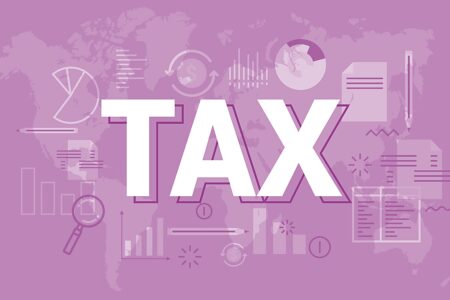For his second Budget, the pressure was certainly on Chancellor Rishi Sunak to lead the UK Economy out of the woods. Support was still needed for both businesses and individuals, as the country looked to emerge from the pandemic.
In this summary we've explained the key developments and changes from the Chancellor's announcement on 3 March 2021.
04 March 2021
To download a pdf version of this Summary click here
Overview
On some counts this Budget was Rishi Sunak’s 15th major announcement since his first Budget, just under a year ago. During this period, the pandemic has dominated the Chancellor’s actions and this was true of his latest Budget. To no small degree the framework for Mr Sunak’s latest appearance at the despatch box had been set by the data-dependent (but date-filled) road map outlined by the Prime Minister nine days before the Budget.
Mr Sunak extended the main employment support schemes to the end of September. The most significant of these, the coronavirus job retention scheme (CJRS – furlough scheme), was covering 4.7 million employments at the end of January with a cumulative cost of nearly £54 billion.
According to the Chancellor, the government’s total pandemic-related spending during 2020/21 and 2021/22 will amount to £407 billion. To put that figure into context, it is £14 billion more than the total amount that income tax will produce over the same two years, according to the Office for Budget Responsibility (OBR).
Such spending has left a hole in the UK’s public finances that the Chancellor has regularly said must be addressed. However, many outside bodies, from the International Monetary Fund to the Institute for Fiscal Studies, have told him that now is not the time to raise taxes. Their argument is that he should only address the deficit (£355 billion in 2020/21) once
the economic recovery is firmly entrenched.
In this Budget, Mr Sunak has largely followed that cautious advice, initially limiting his tax rises to the old stealth option of freezing most personal tax allowances and bands until 2026. However, from 2023 he has been bolder, with no less than a 6% increase in the rate of corporation tax. More changes may be aired on
23 March 2021, so-called ‘Tax Day’.
Personal taxation
Key figures

Income tax
The personal allowance will rise to £12,570 and the higher rate threshold for 2021/22 will increase to £50,270, as previously announced. From 2022/23 to 2025/26, both the personal allowance and higher rate threshold will be frozen. In Scotland, the higher rate threshold for non-savings, non-dividend income will rise to £43,662 in 2021/22 as announced in the Scottish Budget.
National insurance contributions (NICs)
The NIC upper earnings limit and upper profits limit will remain aligned to the higher rate threshold at £50,270 for 2021/22 and through to 2025/26.
Taxation of payments under the self- employment income support scheme (SEISS)
Grants from the SEISS made on or after 6 April 2021 will be taxed in the year of receipt regardless of the accounting year end. Legislation in the Finance Bill will ensure this measure has effect for the tax year 2020/21 and for subsequent tax years.
Income tax exemption for employer-reimbursed COVID-19 tests
There will be an income tax exemption for payments that an employer makes to an employee to reimburse the cost of a relevant coronavirus antigen test in 2020/21 (retrospectively) and 2021/22. The corresponding NIC disregard is already in force for 2020/21 and will be extended to 2021/22.
Easement for employer-provided bicycles exemption
There will be a time-limited easement to the employer-provided cycle exemption to remove the requirement that employer-provided cycles be used mainly for journeys to, from or during work. The easement will be available to employees who have joined a scheme and have been provided with a cycle or cycling equipment on or before 20 December 2020. The easement will remain in force until 5 April 2022.
SAVER TIP
Don’t lose your personal allowance. Your personal allowance of £12,570 in 2021/22 is reduced by 50p for every pound by which your income exceeds £100,000. You could make a pension contribution or a charitable gift to bring your income below £100,000
Mortgage guarantee scheme
A new residential mortgage guarantee scheme will run from April 2021 to December 2022, aimed at increasing availability of 91% to 95% loan-to-value mortgages. The maximum property value will be £600,000 and mortgages must be arranged on a repayment basis.
Extension of social investment tax relief (SITR)
The government will extend the operation of SITR to April 2023.
Individual savings account (ISA) subscription limits
The ISA annual subscription limit for 2021/22 will remain at £20,000 and the corresponding limit for junior ISAs (JISAs) and child trust funds (CTFs) will stay at £9,000.
Green National Savings & Investments (NS&I) product
NS&I will offer a green retail savings product in summer 2021. It will be closely linked to the UK’s sovereign green bond framework, details of which are to be published in June 2021. The first green gilt will also be issued this summer.
Lifetime allowance
The lifetime allowance for pension savings will be frozen at £1,073,100 until April 2026.
Taxation of collective money purchase pensions
Legislation will ensure that collective money purchase pension schemes can operate as registered pension schemes for tax purposes. These are also known as collective defined contribution schemes (CDCs), to be introduced by the Pension Schemes Act 2021.
THINK AHEAD
- The dividend allowance and personal savings allowance has been frozen since 2018/19. Your ISA allowance is £20,000 in 2020/21 and 2021/22 – use it or lose it
-
The lifetime allowance is frozen at £1,073,100 until April 2026. Regularly review the value of your pension benefits and any ongoing contributions.
Capital taxes
Capital gains tax (CGT) annual exempt amount
The annual exempt amount for individuals and personal representatives will remain at £12,300 until 5 April 2026, and the amount for most trustees will likewise remain at £6,150 (minimum £1,230).
THINK AHEAD
CGT reform remains on the agenda. Now may be a good time to review whether to realise your gains before the tax regime becomes harsher.
Inheritance tax (IHT)
The IHT nil rate band will remain at £325,000 until 5 April 2026. The residence nil rate band (RNRB) will likewise stay at £175,000 and the RNRB taper will continue to apply where the value of the deceased’s estate is greater than £2 million.
Stamp duty land tax (SDLT) temporary rates
The temporary increase to £500,000 to the SDLT nil rate band for residential property in England and Northern Ireland is extended until 30 June 2021. From 1 July 2021 until 30 September 2021, the nil rate band will be £250,000 and will then return to £125,000.
Non-UK resident SDLT
As previously announced, there will be an SDLT surcharge on non- UK residents buying residential property in England and Northern Ireland from 1 April 2021. The surcharge will be 2% above the existing residential rates.
Annual tax on enveloped dwellings (ATED)

Business taxes
Corporation tax, diverted profits tax and bank surcharge
The main rate of corporation tax will remain at 19% for the year beginning 1 April 2022 and will rise to 25% from April 2023 for
businesses with profits of £250,000 and over. The rate for businesses with profits of £50,000 or less will remain at 19% and there will be a marginal taper for profits between £50,000 and £250,000.
These thresholds are proportionately reduced for the number of associated companies and for short accounting periods. The rate of diverted profits tax will increase to 31%. The government will review the bank surcharge rate of 8% in light of the corporation tax increase.
Loss relief
The period over which incorporated and unincorporated businesses may carry back trading losses will be extended temporarily from one year to three years.
This extension will apply to a maximum £2 million of unused trading losses made in each of the tax years 2020/21 and 2021/22 by unincorporated businesses. The same maximum will apply separately to companies’ unused trading losses, after carry back to the preceding year, in relevant accounting periods ending between 1 April 2020 and 31 March 2021 and for periods ending between 1 April 2021 and 31 March 2022.
The £2 million cap will be subject to a group-level limit, requiring groups with companies that have the capacity to carry back losses above £200,000 to apportion the cap between their companies.
Research and development (R&D) tax credits
As previously announced, for accounting periods beginning on or after 1 April 2021, the amount of payable R&D tax credit that a small and medium-sized enterprise (SME) can receive in any one year will be capped at £20,000 plus three times the company’s total PAYE and NIC liability.
THINK AHEAD
Your business might be entitled to a valuable R&D tax credit – even if it doesn’t make a taxable profit. Check out the position; you might be surprised what expenditure can qualify and how much it could be worth to you.
Super-deduction for investment in plant and machinery and 50% first-year allowances
Companies investing in qualifying new plant and machinery between 1 April 2021 and 31 March 2023 will benefit from new first-year capital allowances.
Investments in main-rate assets – those that qualify for 18% writing down allowance (WDA) – will be relieved by a 130% super-deduction, while investments in assets qualifying for 6% WDAs will benefit from a 50% first-year allowance.
Annual investment allowance (AIA) extension
As previously announced, the temporary £1 million limit for the AIA will be extended again – to 31 December 2021.
Freeports
Eight new English freeports have been announced: East Midlands Airport, Felixstowe and Harwich, Humber Region, Liverpool City Region, Plymouth, Solent, Thames and Teesside. Several tax reliefs will be available in designated tax sites within the freeports once these sites have been confirmed.
- Companies investing in plant and machinery will qualify for a 100% enhanced capital allowance. This will have effect for investment incurred on or after their designation as tax sites until 30 September 2026.
- An enhanced 10% rate of structures and buildings allowance will be available for constructing or renovating non-residential structures and buildings. The structure or building will have to be brought into use by 30 September 2026.
- Full relief from SDLT will apply until 30 September 2026 to the purchase of land for qualifying use in freeport tax sites in England once they have been designated.
- Full business rates relief will be available to all new businesses and certain existing businesses that expand, until September 2026. Relief will apply for five years from when the business first receives relief.
- Subject to parliamentary process, an employer NIC relief will be available for eligible employees from April 2022 until at least April 2026 and possibly up to April 2031.
Plant and machinery leases
Certain parts of anti-avoidance legislation affecting leases extended as a result of COVID-19 will be turned off. This will restore eligibility to claim capital allowances to the position as originally intended immediately before the date of the change in consideration due under the lease.
The change will affect leases only where a relevant change in consideration is implemented between 1 January 2020 and 30 June 2021. Either party may choose not to apply this
treatment, the election for which will be binding on both parties.
Off-payroll working
A technical change will address an unintended widening of the definition of an intermediary company in the off-payroll working rules legislation.
Changes to the rules regarding the provision of information by parties in the labour supply chain will make it easier for parties in a contractual chain to share information relating to the off-payroll working rules. The changes will allow an intermediary, as well as a worker, to confirm if the rules need to be considered by the client organisation.
The government will also amend a provision relating to fraudulent information to allow HMRC to take action against any UK-based party in the labour supply chain providing fraudulent information.
Withdrawal of London Inter-Bank Offered Rate (LIBOR) References to LIBOR
in certain leasing provisions will be replaced by ‘incremental borrowing rate’ as defined by generally accepted accounting practice (GAAP). A time-limited power will be introduced to allow any unintended tax consequences arising from the transition away from LIBOR and other benchmark rates to be addressed in secondary legislation.
Landfill tax
The standard and lower rates of landfill tax will rise in line with RPI, rounded to the nearest five pence with effect from 1 April 2022.
Plastic packaging tax
A new plastic packaging tax will start on 1 April 2022 to encourage the use of recycled plastic instead of new plastic in packaging. As previously announced, the rate will be £200 per tonne of plastic packaging that contains less than 30% recycled plastic content.
Tax treatment of business rates repayments
The repayments of business rates relief by some businesses will be deductible for corporation tax and income tax, as previously announced.
Interest and royalties
The legislation that gives effect to the EU Interest and Royalties Directive will be repealed. This legislation currently provides an exemption from withholding tax on intra-group interest and royalty payments between UK and EU companies. From 1 June 2021 withholding taxes will apply to payments of annual interest and royalties made to EU companies, subject to the terms of the relevant double taxation agreement.
Enterprise management incentives (EMI)
As previously announced, the government will extend until 5 April 2022 the time-limited exception ensuring that employees continue to meet the working time requirements for EMI schemes if they are furloughed or working reduced hours because of COVID-19.
THINK AHEAD
- If you want to take advantage of Time to Pay, make sure that you have adequate records to justify your claim to HMRC.
- If COVID-19 has left your business with tax losses, you could benefit from the temporary facility to carry back trading losses for up to three years
Value Added Tax
Registration and deregistration thresholds
Until 31 March 2024 the VAT registration threshold will remain at £85,000 and the deregistration threshold will stay at £83,000.
VAT deferral new payment scheme
As previously announced, businesses that deferred VAT payments due between 20 March and 30 June 2020 will be able to pay them in 8 to 11 interest-free equal monthly instalments up to 31 March 2022.
Businesses may opt into the scheme until June 2021 and the number of instalments depends on the date of opting in. Businesses that do not choose this option must pay deferred VAT by 31 March 2021. A penalty will be charged where the deferred VAT is not paid or there is no arrangement to pay.
Tourism and hospitality
The temporary reduced rate of 5% for hospitality, holiday accommodation and attractions is extended until 30 September 2021. A new reduced rate of 12.5% will apply from 1 October 2021 to 31 March 2022, at which point the rate will revert to the 20% standard rate.
Making tax digital (MTD)
MTD will be extended to all VAT registered businesses with effect from 1 April 2022, as previously announced.
THINK AHEAD
VAT rules on cross-border trading have changed following the end of the EU exit transition period. Make sure you understand how your business has been affected.
Tax avoidance and evasion
Self-employment income support scheme (SEISS)
A 100% tax charge can be levied on individuals who receive SEISS payments to which they are not entitled. The provisions are being extended to enable HMRC to recover payments where an individual was entitled to the grant at the time of claim but subsequently ceases to be entitled to all or part of the grant.
Late submission and late payment of tax
The penalty regime for VAT and income tax self-assessment (ITSA) will be made points-based, so that a financial penalty will only be issued when the relevant threshold is reached. The new late payment regime will introduce penalties proportionate to the amount of tax owed and how late the tax due is. Interest charges and repayment interest on VAT will be aligned with other tax regimes.
These reforms will come into effect for:
- VAT payers – from periods starting on or after 1 April 2022.
- Taxpayers in ITSA with business or property income over £10,000 a year – from accounting periods beginning on or after 6 April 2023.
- All other taxpayers in ITSA – from accounting periods beginning on or after 6 April 2024.
Electronic sales suppression (ESS)
The possession, manufacture, distribution and promotion of ESS software and hardware will become an offence. New ESS-specific information powers will enable HMRC to identify developers and suppliers in the ESS supply chain and access software developers’ source code.
Promoters of tax avoidance
A package of measures will strengthen existing anti-avoidance regimes and tighten the rules designed to tackle promoters and enablers of tax avoidance schemes.
Follower notice penalties
As previously announced, the rate of penalty that may be charged to people receiving follower notices as a result of using tax avoidance schemes will be reduced from 50% to 30% of the tax in dispute. A further penalty of 20% will be charged if the tax tribunal decides that the recipient’s continued litigation against HMRC is unreasonable. The changes will take effect from Royal Assent.
Tax conditionality
The renewal of certain licences will be conditional on applicants completing checks that confirm they are appropriately registered for tax, as previously announced. The licences concerned are those needed to drive taxis and private hire vehicles, operate private hire vehicle firms and deal in scrap metal. In Northern Ireland this will apply only to taxi licences.
The change will take effect from 4 April 2022 in England and Wales and from April 2023 in Scotland and Northern Ireland.
Unauthorised removal of goods
From the date of Royal Assent, a civil penalty will apply to traders who remove goods that have been seized from the trader’s premises or ‘in situ’ without prior authorisation from HMRC.
OECD reporting rules for digital platforms
The government will consult in summer 2021 on the implementation of OECD rules that will require digital platforms to send information about the income of their sellers to both HMRC and the sellers themselves.
OECD mandatory disclosure rules
The government will consult on the implementation of OECD rules to combat offshore tax evasion by facilitating global exchange of information on certain cross border tax arrangements.
Amendments to HMRC civil information powers
A new Financial Institution Notice will require financial institutions to provide information to HMRC about any specific taxpayer, without the need for approval from the independent tax tribunal.
Investment in HMRC
Additional government investment will enable HMRC to improve its IT systems to make the collection of tax and payments to taxpayers easier, to recruit additional compliance staff and to continue to fund compliance work.
Coronavirus support measures
Coronavirus job retention scheme (CJRS)
The CJRS (furlough scheme) will be extended to run until 30 September 2021, providing employees with 80% of their current salary for hours not worked.
Up to the end of June, the current 80% government payment level will be maintained (capped at £2,500 a month), with employers responsible for NICs and pension payments. The government payment will then drop to 70% in July and 60% in August and September (with the monthly cap reducing proportionately).
Self-employed income support scheme (SEISS)
The SEISS will also be extended to September 2021. A fourth SEISS grant will run from 1 February to 30 April, worth 80% of three months’ average profits (capped at £7,500). This grant will be claimable from late April.
A fifth grant, claimable from late July, will cover the period May to September. It will be worth 80% of three months’ average profits where the claimant’s turnover has dropped by 30% or more. Where the fall in turnover is less, the grant will be limited to 30% of profits (capped at £2,850). Eligibility for both grants will be extended to include those who were self-employed in 2019/20 and who have filed a tax return for that year.
Universal credit
The temporary £20 a week increase in universal credit will continue to be paid until 30 September 2021. The suspension of the minimum income floor (MIF) for self-employed claimants will continue until the end of July 2021. The MIF will be gradually reintroduced from August, but the DWP will use discretion not to apply it on an individual basis where a claimant’s earnings continue to be affected by COVID-19 restrictions.
Those claiming working tax credits will receive a one-off payment of £500.
National Insurance Contributions

Final thoughts
As always, the devil is in the detail. As the Treasury begins to release the papers behind the Chancellor’s headlines and soundbites, the Shipleys team will be closely monitoring what these mean for our clients. We’ll be sharing our conclusions and advice here on our website, in our Shipshape magazines, in our Tax Facts card and in our conversations with clients.
In the meantime, if you wish to discuss how the Budget will impact on you, please do talk with your usual Shipleys’ contact or call one of our offices. As always, our goal is to help our clients thrive.
This Budget Summary is based on the Chancellor’s Budget Statement on 3 March 2021, supplemented by information from official publications.
It reflects our understanding of proposed changes to tax law and practice at the date of publication, but is not a complete and definitive guide. The Budget proposals may be amended before the Finance Bill becomes law.
Specific advice should therefore be obtained before taking action, or refraining from taking action, on the basis of this information.
© 2021 Shipleys LLP




















